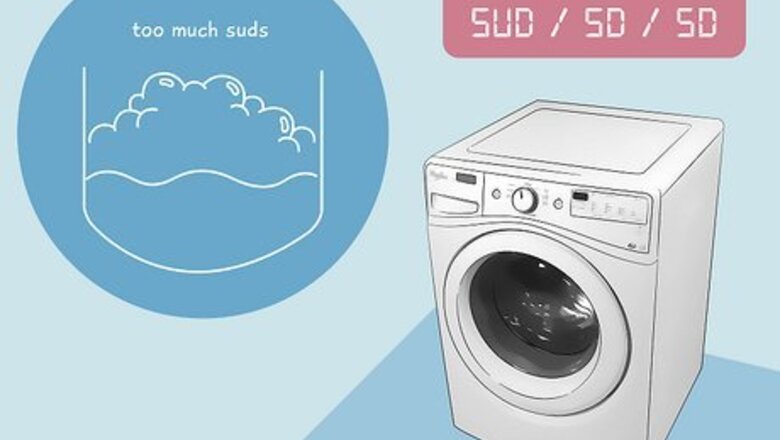
views
Front Loader Codes
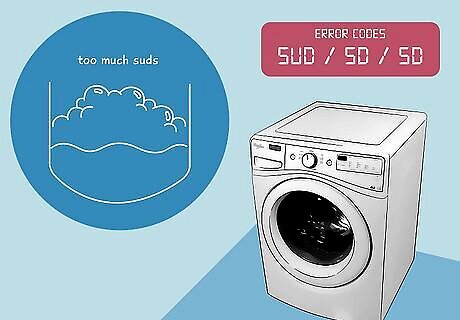
Sud, Sd, or 5D What It Means: These are all short for “suds.” You have excessive suds in the washer! Leave the machine alone and let it get rid of the extra soap. Potential Solutions: This error code will go away on its own once the machine detects fewer suds. In the future, only use high-efficiency (HE) detergent and don’t overdo it with the detergent.

F21 What It Means: You have a drain problem. The washer is struggling to get rid of all of the water properly. Potential Solutions: Repair any kinks in the drain. Then, inspect the drain to ensure there are no clogs. Lastly, make sure that the hose drains into the sink or floor at a height lower than 96 inches (240 cm). If the hose is too high, gravity won’t allow all the water to drain out.
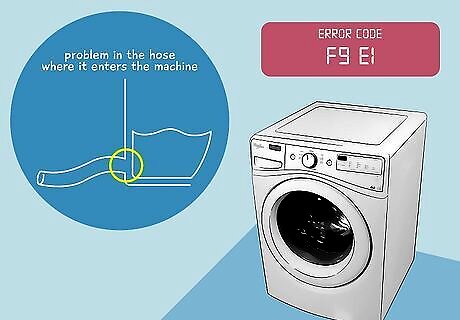
F9 E1 What It Means: You have a drain problem—specifically where the hose enters the machine. Potential Solutions: Pull the hose out a few inches from the machine and readjust the clamp. Your hose is likely too far inside of the drain pump. If you taped over the opening, remove the tape—you actually need a little bit of air flowing in and out of the machine to help drainage along. If the drain hose is more than 96 inches (240 cm) off of the floor, lower it.

LOC or LC What It Means: The control lock is activated. The control lock is the “safety” lock you activate to prevent people (usually children) from opening the washer lid. Potential Solutions: You probably hit the lock button by accident. Look for a “lock” or “control lock” button on the washer. Press it to see if that unlocks the door. If it doesn’t, press the lock and hold it down for a few seconds. The lock should shut off.
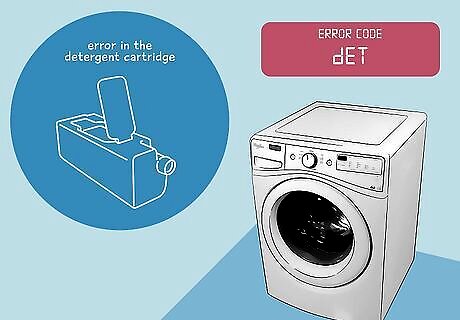
dET What It Means: The cartridge that dispenses the detergent is either missing or sticking out of its slot. Potential Solutions: If you’re using single-load detergent pods, you can ignore this message. It won’t impact anything. If you’re using the dispenser, pause the machine, open the lid, and reinsert the cartridge to ensure it’s fully inserted. If the error never goes away and that cartridge is where it belongs, you can just ignore it. There may be a sensor that went bad, but your machine should still work like normal.

Int What It Means: This is short for “interrupted.” Your wash cycle was paused or canceled. Potential Solutions: Wait 20-30 minutes. Then, press the pause or cancel button twice, followed by the power button once. The machine will restart. If the code comes back, unplug the machine for 1 minute and then plug it back in. This will hard reset the machine.

rL or F34 What It Means: There’s something in the drum during the “clean drum” or “clean machine” cycle. Potential Solutions: If you’re trying to clean the machine, look in the drum and remove whatever you forgot to take out. If you weren’t trying to clean the machine, move the dial to the cycle you actually wanted to run.

F5 E3 What It Means: The door isn’t locking or closing correctly. Potential Solutions: Open and close the door again to ensure it’s not obstructed or halfway closed. If the error still doesn’t go away, the door latch or seal may be broken. Contact a pro to have the door replaced or try replacing the seal yourself.
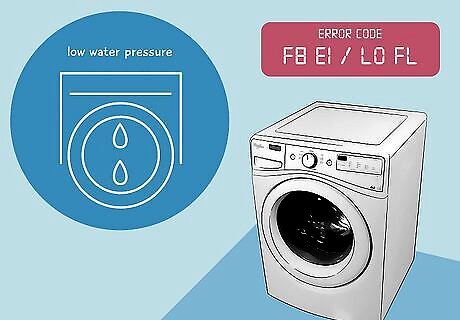
F8 E1 or LO FL What It Means: Your machine is detecting that there isn’t enough water. Potential Solutions: Check the water at a nearby sink to confirm your home’s water pressure isn’t low. If it is, just wait for the pressure to return or contact a plumber. If the water everywhere else is fine, look at the water supply line for your washer. Ensure that the supply line has no kinks or leaks. Then, check the drain line. If it’s clogged, clean it out so that the water can flow freely.
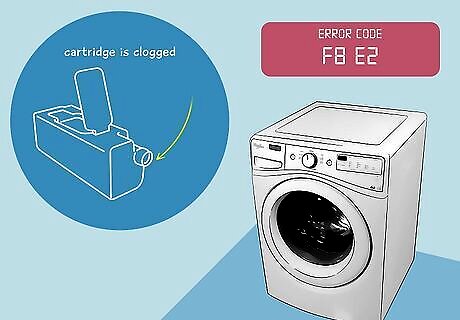
F8 E2 What It Means: The detergent cartridge is clogged. Potential Solutions: Remove the detergent cartridge and rinse it out under warm water until all of the soap scum washes away. If you just filled it up, try using less detergent in the future.
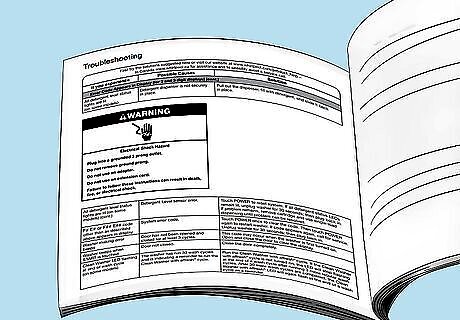
Other F and E error codes What It Means: There are a few other fringe error codes that are specific to certain models. Potential Solutions: Refer to your specific machine’s manual. When in doubt, unplug the machine, wait 1 minute, and then plug it back in. This will hard reset the machine and clear any resolved codes.
Top Loader Codes
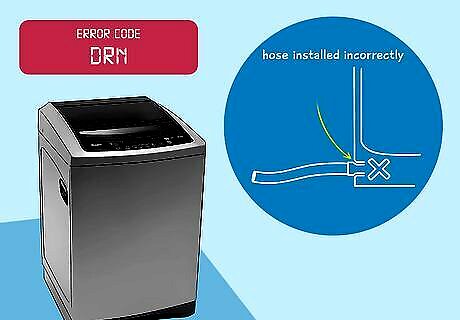
drn What It Means: The washer isn’t draining properly. Potential Solutions: The hose was likely installed incorrectly. Remove it from the valve where it enters the machine and reinstall it.
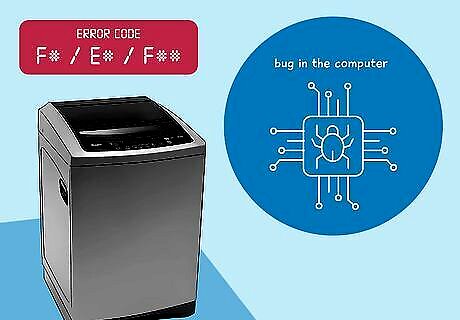
F#, E#, or F## What It Means: These are system error codes. Basically, the computer inside of your washing machine hit a bug or glitched out. Potential Solutions: Press the “start/pause” or “start” button once. Then, press it again to restart the cycle you were trying to run. If the error comes back on again, Whirlpool explicitly asks users to contact them. Call 1-866-698-2538 if you’re in the US, or 1-800-807-6777 if you’re in Canada. You can also use their live chat if you prefer.
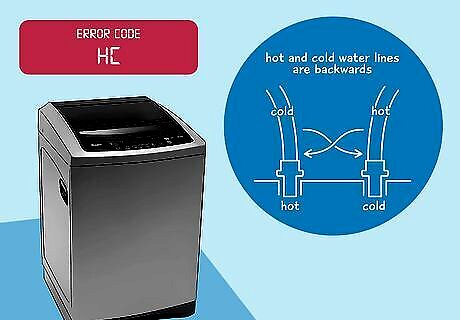
HC What It Means: Your hot and cold water lines are backwards. Potential Solutions: Shut the water supply off and then unscrew the nuts, securing the lines in place. Switch them and retighten the nuts. Turn the machine on and then off and the code will go away.

LdL What It Means: This is short for “lid lock.” Your machine’s lock function isn’t working correctly. Potential Solutions: Open the lid and inspect the latch. If it’s dirty, wipe it clean with a damp rag. If that doesn’t solve the problem, contact an appliance repair specialist.

LdU What It Means: The lid can’t unlock. Potential Solutions: If there’s something on top of the lid, remove it. Even a lightweight laundry basket can put too much pressure on the latch mechanism. If there’s nothing on the lid, contact an appliance repair specialist.
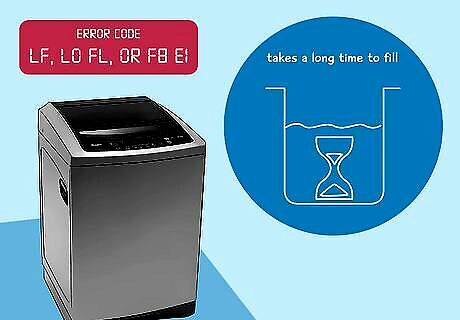
LF, Lo FL, or F8 E1 What It Means: The washer is taking abnormally long to fill with water. Potential Solutions: This one isn’t actually a big deal, so long as you don’t mind waiting a bit longer for the wash cycles to end. If you do want to troubleshoot, check the supply line valves to make sure they’re open all the way. Also, check to make sure both the hot and cold water supply lines are connected. You actually need both hot and cold to run a Whirlpool washer.

lid What It Means: This isn’t actually an error code; it just means the lid is still open. Potential Solutions: If the lid is left open for more than 10 minutes, Whirlpool top loaders automatically reset and drain. Close the lid and enter the cycle again.
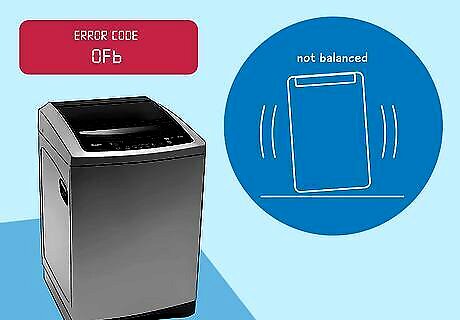
Ofb What It Means: This is short for “off balance.” Top-loading machines must be perfectly balanced to keep the spinning drum from throwing the machine off-kilter. When that happens, the drum needs to slow down to avoid knocking the machine over. Potential Solutions: Wait for the lid to unlock and the machine to stop. Then, put a spirit level on top of the machine. If it’s level, remove half of the load and split your current wash into two cycles. If it isn’t level, adjust the legs on the bottom of the machine until the machine is even. Never add wet items to a washer mid-cycle. That can throw the drum way off, even if the machine is perfectly balanced. This problem can also be caused by overloading the drum. If you consistently run into Ofb errors, you’re probably putting too much into each load.

OL What It Means: The drum is detecting too much weight. In other words, you overloaded the machine. Potential Solutions: Remove half of the clothes and split them up into two separate loads.

PF What It Means: PF is short for “power failure.” Something went wrong with the electrical current while the machine was mid-cycle. Potential Solutions: Press “start” or “cancel.” Wait for the water to drain if necessary, and then run your new cycle. This can happen because of a power outage or a blown circuit, which are pretty benign. If this keeps happening over and over again, the machine may have an electrical issue. Contact an appliance repair pro.
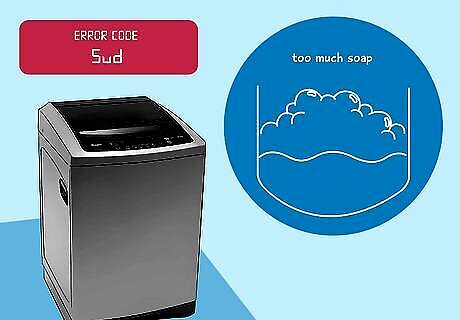
Sud What It Means: There’s too much soap in the machine. Potential Solutions: Wait for the machine’s suds level to lower naturally. This may take a few hours. Then, the machine cycle should complete naturally over time. In the future, use less soap and only use high-efficiency (HE) detergent.











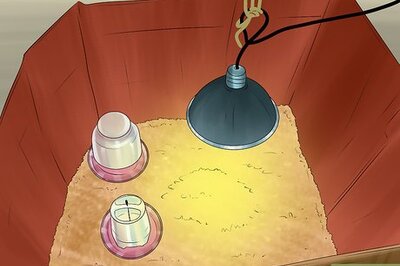

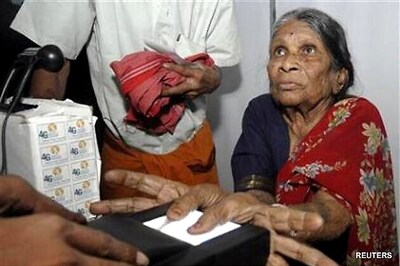




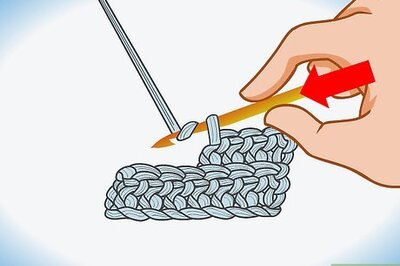

Comments
0 comment